DESERT ANIMALS for Class 6 ENGLISH
THEME
Desert is a place with no water, which means the driest place on earth and the chapter ‘Desert Animals’ is all about the animals who live in the desert and how they survive in such harsh conditions.
THEME
Desert is a place with no water, which means the driest place on earth and the chapter ‘Desert Animals’ is all about the animals who live in the desert and how they survive in such harsh conditions.
EXPLANATION
Desert prithvi par sabse sookha sthaan hota hai jaha paani ki kami hoti hai aur 'Desert Animals' chapter un sabhi jaanwaro ke baare mein hai jo desert mein aisi kathor paristhitiyon mein jeevit rehte hai.
EXPLANATION
रेगिस्तान पृथ्वी पर सबसे सूखा स्थान होता है जहाँ पानी की कमी होती है और 'डेजर्ट एनिमल्स' अध्याय उन सभी जानवरों के बारे में है जो रेगिस्तान में ऐसी कठोर परिस्थितियों में जीवित रहते हैं।
ABOUT THE AUTHOR
Anonymous
ABOUT THE AUTHOR
Anonymous
EXPLANATION
Iss kahaani ke lekhak unknown (jiska naam hume na pata ho) hai.
EXPLANATION
इस कहानी के लेखक अज्ञात (जिसका नाम हमें ना पता हो) है।
PARAGRAPH 1
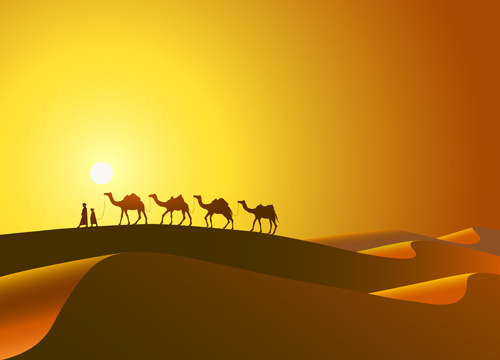
DESERTS are the driest places on earth and sometimes go for months, or even years, without rain. But even the desert animals cannot survive without water, or for long periods in the scorching sun, so they have had to find different ways of coping with the harsh conditions.
PARAGRAPH 1

DESERTS are the driest places on earth and sometimes go for months, or even years, without rain. But even the desert animals cannot survive without water, or for long periods in the scorching sun, so they have had to find different ways of coping with the harsh conditions.
IMPORTANT WORDS
Driest: having little or no rain, वर्षान्यून या वर्षाहीन (मौसम), कम वर्षा वाला या वर्षारहित (मौसम), सूखा
Survive: to continue to live or exist in or after a difficult or dangerous situation, कठिन या संकटपूर्ण स्थिति में या उसके बाद जीवित या अस्तित्व में बने रहना
Scorching: very hot, बहुत गरम; झुलसाने वाला
Coping: to deal successfully with a difficult matter or situation, कठिन स्थिति से सफलतापूर्वक निपटना
Harsh: unpleasant and difficult to live in, जहाँ रहना अप्रिय और कठिन हो
IMPORTANT WORDS
Driest: having little or no rain, वर्षान्यून या वर्षाहीन (मौसम), कम वर्षा वाला या वर्षारहित (मौसम), सूखा
Survive: to continue to live or exist in or after a difficult or dangerous situation, कठिन या संकटपूर्ण स्थिति में या उसके बाद जीवित या अस्तित्व में बने रहना
Scorching: very hot, बहुत गरम; झुलसाने वाला
Coping: to deal successfully with a difficult matter or situation, कठिन स्थिति से सफलतापूर्वक निपटना
Harsh: unpleasant and difficult to live in, जहाँ रहना अप्रिय और कठिन हो
EXPLANATION
Desert prithvi par sabse sookha sthaan hai aur kabhi-kabhi yahaan mahino, ya varshon tak bhi baarish nahi hoti hai. Lekin deserts ke jaanwar bhi paani ke bina ya chilchilati dhoop mein lambe samay tak jeevit nahi reh sakte, isliye unhe kathor halaton se nipatne ke alag alag tareeke dhundne padte hai.
EXPLANATION
रेगिस्तान पृथ्वी पर सबसे सूखा स्थान है और कभी-कभी यहाँ महीनों, या वर्षों तक भी बारिश नहीं होती है। लेकिन रेगिस्तान के जानवर भी पानी के बिना या चिलचिलाती धूप में लंबे समय तक जीवित नहीं रह सकते, इसलिए उन्हें कठोर हालतों से निपटने के अलग अलग तरीके ढूंढ़ने पड़ते हैं।
PARAGRAPH 2
For example, gerbils spend the hottest part of the day in cool underground burrows. And strange insects called darkling beetles are experts at catching drops of moisture on their legs, then lifting them into the air until the drops trickle down into their mouths.
PARAGRAPH 2
For example, gerbils spend the hottest part of the day in cool underground burrows. And strange insects called darkling beetles are experts at catching drops of moisture on their legs, then lifting them into the air until the drops trickle down into their mouths.
IMPORTANT WORDS
Burrows: a hole in the ground made by certain animals, बिल
Beetles: an insect, often large, shiny and black, with a hard case on its back covering its wings. There are many different types of beetles, एक प्रकार का बड़ा काला व चमकीला कीट जिसके पीठ पर कड़ा आवरण होता है जो इसके पंखों को ढकता है; एक प्रकार का भौंरा, भृंग। यह कीट अनेक प्रकार का होता है
Moisture: water in small drops on a surface, नमी, आर्द्रता
Trickle: (used about a liquid) to flow in a thin line, (द्रव का) बूँद-बूँद टपकना
Strange: unusual or unexpected, असामान्य या अप्रत्याशित; विचित्र; अजीब
IMPORTANT WORDS
Burrows: a hole in the ground made by certain animals, बिल
Beetles: an insect, often large, shiny and black, with a hard case on its back covering its wings. There are many different types of beetles, एक प्रकार का बड़ा काला व चमकीला कीट जिसके पीठ पर कड़ा आवरण होता है जो इसके पंखों को ढकता है; एक प्रकार का भौंरा, भृंग। यह कीट अनेक प्रकार का होता है
Moisture: water in small drops on a surface, नमी, आर्द्रता
Trickle: (used about a liquid) to flow in a thin line, (द्रव का) बूँद-बूँद टपकना
Strange: unusual or unexpected, असामान्य या अप्रत्याशित; विचित्र; अजीब
EXPLANATION
For example, Gerbils din ka sabse garm samay thande dens mein bitate hai. Aur ajeeb dikhne vale keede jinhe Darkling Beetles kaha jata hai, ve apne pairo par nami ki boondo ko jama karne mein mahir hote hain, phir unhe hava mein tab tak utha kar rakhte hain jab tak ki vah boonde unke muh mein nahi chali jati.
EXPLANATION
उदाहरण के लिए, जरबिल्स दिन का सबसे गर्म समय ठंडे बिलों में बिताते हैं। और अजीब दिखने वाले कीड़े जिन्हें डॉर्कलिंग बीटल कहा जाता है, वे अपने पैरों पर नमी की बूंदों को जमा करने में माहिर होते हैं, फिर उन्हें हवा में तब तक उठा कर रखते हैं जब तक कि वह बूंदें उनके मुंह में नहीं चली जातीं।
PARAGRAPH 3
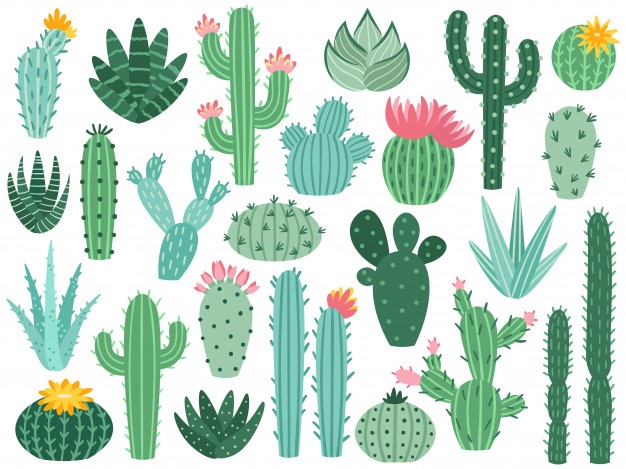
Not all deserts are endless seas of rolling sand dunes. Some are rocky or pebbly and dotted with small bushes while others are sprinkled with colourful flowers during the spring.
PARAGRAPH 3

Not all deserts are endless seas of rolling sand dunes. Some are rocky or pebbly and dotted with small bushes while others are sprinkled with colourful flowers during the spring.
IMPORTANT WORDS
Endless: lasting long and seeming to have no end, बहुत लंबा, अंतहीन-सा, मानो अंतहीन
Dunes: a low hill of sand by the sea or in the desert, बालू का टीला (समुद्र के पास या रेगिस्तान में बना), बालूटिब्बा
Rocky: covered with or made of rocks, चट्टानों से भरा या बना हुआ; चट्टानी
IMPORTANT WORDS
Endless: lasting long and seeming to have no end, बहुत लंबा, अंतहीन-सा, मानो अंतहीन
Dunes: a low hill of sand by the sea or in the desert, बालू का टीला (समुद्र के पास या रेगिस्तान में बना), बालूटिब्बा
Rocky: covered with or made of rocks, चट्टानों से भरा या बना हुआ; चट्टानी
EXPLANATION
Sabhi deserts sirf sand dunes se bhare nahi hote hai. Kuch chattano ya kankad se bhare hote hai ya kahi-kahi choti jhaadiyan hoti hai jabki kuch spring ke dauraan rangeen phoolo ke saath bhi dhake hote hai.
EXPLANATION
सभी रेगिस्तान सिर्फ रेत के टीलों से भरे नहीं होते हैं। कुछ चट्टानी या कंकड़ से भरे होते हैं या कहीं-कहीं छोटी झाड़ियाँ होती हैं जबकि कुछ वसंत (स्प्रिंग) के दौरान रंगीन फूलों के साथ भी ढके होते हैं।
PARAGRAPH 4
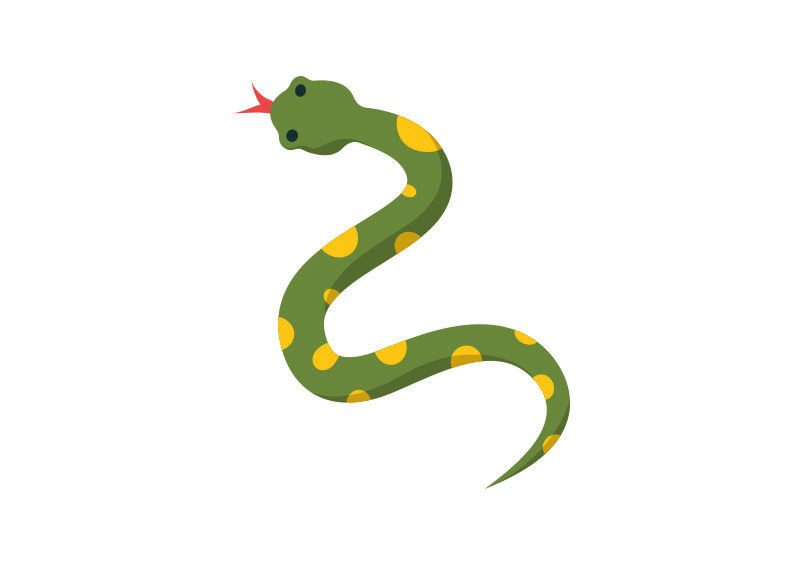
There are more than 2300 different kinds of snakes around the world, ranging from just fifteen centimetres long to more than eleven metres. Most snakes are quite harmless — but there are a few that are so poisonous they can kill a human being with just one bite. Most snakes lay eggs, but there are many which give birth to their young.
PARAGRAPH 4

There are more than 2300 different kinds of snakes around the world, ranging from just fifteen centimetres long to more than eleven metres. Most snakes are quite harmless — but there are a few that are so poisonous they can kill a human being with just one bite. Most snakes lay eggs, but there are many which give birth to their young.
IMPORTANT WORDS
Harmless: not able or not likely to cause damage or injury; safe, अहानिकर; सुरक्षित
Poisonous: (used about animals, etc.) producing and using poison to attack its enemies, (पशु आदि) विषैला, ज़हरीला
IMPORTANT WORDS
Harmless: not able or not likely to cause damage or injury; safe, अहानिकर; सुरक्षित
Poisonous: (used about animals, etc.) producing and using poison to attack its enemies, (पशु आदि) विषैला, ज़हरीला
EXPLANATION
Duniya bhar mein 2300 se adhik vibhin prakaar ke saap hai, jinki lambayi sirf 15 centimetre se lekar 11 meter se adhik tak ki ho sakti hai. Zyada tar saap kaafi harmless hote hai - lekin kuch aise bhi hote hai jo itne jehreele (poisonous) hote hain ki ve ek insaan ko sirf ek baar kaatne ke baad maar sakte hai. Mostly saap ande dete hai, lekin kayi aise hai jo apne bachon ko janm dete hai.
EXPLANATION
दुनिया भर में 2300 से अधिक विभिन्न प्रकार के साँप हैं, जिनकी लंबाई सिर्फ पंद्रह सेंटीमीटर से लेकर ग्यारह मीटर से अधिक तक की हो सकती है। ज़्यादातर साँप काफी हानिरहित होते हैं - लेकिन कुछ ऐसे भी होते हैं जो इतने जहरीले होते हैं कि वे एक इंसान को सिर्फ एक बार काटने के बाद मार सकते हैं। अधिकांश साँप अंडे देते हैं, लेकिन कई ऐसे हैं जो अपने बच्चों को जन्म देते हैं।
PARAGRAPH 5
In the dry, rocky deserts of America lives a rather evil-looking snake with a very bad reputation. Its frightening rattle can be heard as far as thirty metres away, and it can strike with lightning speed.
PARAGRAPH 5
In the dry, rocky deserts of America lives a rather evil-looking snake with a very bad reputation. Its frightening rattle can be heard as far as thirty metres away, and it can strike with lightning speed.
IMPORTANT WORDS
Reputation: the opinion that people in general have about what somebody/something is like, व्यकि्त या वस्तु के विषय में लोगों की आम धारणा
Frightening: making you feel afraid or shocked, डराने या सदमा पहुँचाने वाला
IMPORTANT WORDS
Reputation: the opinion that people in general have about what somebody/something is like, व्यकि्त या वस्तु के विषय में लोगों की आम धारणा
Frightening: making you feel afraid or shocked, डराने या सदमा पहुँचाने वाला
EXPLANATION
America ke sookhe, chattani deserts mein daravne dikhne vale kuch khatarnaak saap rehte hai. Inki daravni khadkhadahat 30 meters door tak sunni jaa sakti hai, aur yah bijli ki speed se vaar karne ke kabil hote hai.
EXPLANATION
अमेरिका के सूखे, चट्टानी रेगिस्तानों में डरावने दिखने वाले कुछ खतरनाक साँप रहते हैं। इनकी भयावह खड़खड़ाहट तीस मीटर दूर तक सुनी जा सकती है, और यह बिजली की गति से वार करने के काबिल होते हैं।
PARAGRAPH 6
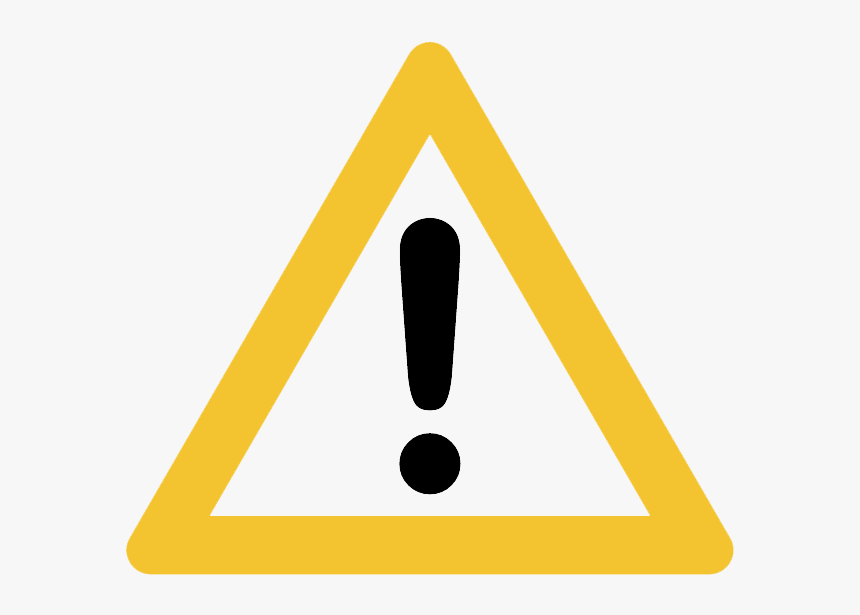
But the rattlesnake, or ‘rattler’ as it is sometimes called, prefers to avoid people if it possibly can. It holds its tail upright and rattles the end whenever it is disturbed, in the hope that the intruder will go away. However, if its warnings are ignored—and it feels threatened—it will coil ready to bite. But the rattler itself cannot hear the noise its own tail makes.
PARAGRAPH 6

But the rattlesnake, or ‘rattler’ as it is sometimes called, prefers to avoid people if it possibly can. It holds its tail upright and rattles the end whenever it is disturbed, in the hope that the intruder will go away. However, if its warnings are ignored—and it feels threatened—it will coil ready to bite. But the rattler itself cannot hear the noise its own tail makes.
IMPORTANT WORDS
Upright: in or into a vertical position, खड़ी स्थिति में, खड़ा, सीधा
Disturbed: annoy or bother someone, किसी को परेशान या तंग करना
Intruder: a person who enters a place without permission and often secretly, बिना अनुमति और प्रायः गुप्त रीति से किसी स्थान में प्रवेश करने वाला व्यक्ति; घुसपैठिया, अनधिकार प्रवेश करने वाला व्यक्ति
Warnings: something that tells you to be careful or tells you about something, usually something bad, before it happens, (प्रायः अशुभ स्थिति से) सतर्क करने वाली बात; पूर्वसूचना, चेतावनी
Threatened: to warn that you may hurt, kill or punish somebody if he/she does not do what you want, (इच्छित काम न करने पर) (चोट, क्षति पहुँचाने की) धमकी देना
IMPORTANT WORDS
Upright: in or into a vertical position, खड़ी स्थिति में, खड़ा, सीधा
Disturbed: annoy or bother someone, किसी को परेशान या तंग करना
Intruder: a person who enters a place without permission and often secretly, बिना अनुमति और प्रायः गुप्त रीति से किसी स्थान में प्रवेश करने वाला व्यक्ति; घुसपैठिया, अनधिकार प्रवेश करने वाला व्यक्ति
Warnings: something that tells you to be careful or tells you about something, usually something bad, before it happens, (प्रायः अशुभ स्थिति से) सतर्क करने वाली बात; पूर्वसूचना, चेतावनी
Threatened: to warn that you may hurt, kill or punish somebody if he/she does not do what you want, (इच्छित काम न करने पर) (चोट, क्षति पहुँचाने की) धमकी देना
EXPLANATION
Lekin 'Rattlesnake', ya 'Rattler', jaisa ki inhe kabhi-kabhi bulaya jata hai, logo se door rehna pasand karte hai. Yah apni poonch ko seedha rakhte hai aur jab bhi inhe pareshaan kiya jata hai toh vah apni poonch ko hilate hai jisse ek khadkhadane ki aawaaz aati hai, iss ummeed mein ki jo bhi use pareshaan kar raha hai vah bhaag jaye. Halanki, agar inki chetavaniyon (warnings) ko nazarandaaz (ignore) kiya jata hai - aur ye khatra mehsoos karte hai - toh yah kaatne ke liye taiyaar ho jate hai. Lekin ek rattler khud apni poonch ki aawaaj ko nahi sunn pata hai.
EXPLANATION
लेकिन रैटलस्नेक, या 'रैटलर', जैसा कि इन्हें कभी-कभी बुलाया जाता है, लोगों से दूर रहना पसंद करते हैं। यह अपनी पूंछ को सीधा रखते हैं और जब भी इन्हें परेशान किया जाता है तो वह अपनी पूंछ को हिलाते है जिससे एक खड़खड़ाने की आवाज़ आती है, इस उम्मीद में कि जो भी उसे परेशान कर रहा है वह भाग जाए। हालाँकि, अगर इनकी चेतावनियों को नज़रअंदाज किया जाता है - और ये खतरा महसूस करते है - तो यह काटने के लिए तैयार हो जाते हैं। लेकिन एक रैटलर खुद अपनी पूंछ की आवाज को नहीं सुन पाता है।
PARAGRAPH 7
Like most snakes, it ‘hears’ things through vibrations in the ground. If a person walks nearby the snake can feel the movement. But if the same person were to shout, it would not hear a thing.
PARAGRAPH 7
Like most snakes, it ‘hears’ things through vibrations in the ground. If a person walks nearby the snake can feel the movement. But if the same person were to shout, it would not hear a thing.
IMPORTANT WORDS
Vibrations: an instance of vibrating, दोलन, प्रदोलन, कंपन
IMPORTANT WORDS
Vibrations: an instance of vibrating, दोलन, प्रदोलन, कंपन
EXPLANATION
Zyadatar snakes ki tarah, ye zameen mein vibrations ke madhyam se cheezon ko 'sunte' hai. Yadi koi vyakti paas mein chalta hai toh saap uski speed ko mehsoos kar sakta hai. Lekin agar vahi vyakti chillaye, to saap ko kuch bhi sunayi nahi dega.
EXPLANATION
ज़्यादातर साँपों की तरह, ये जमीन में कंपन (vibrations) के माध्यम से चीजों को 'सुनते' है। यदि कोई व्यक्ति पास में चलता है तो साँप उसकी गति को महसूस कर सकता है। लेकिन अगर वही व्यक्ति चिल्लाए, तो साँप को कुछ भी सुनाई नहीं देगा।
PARAGRAPH 8
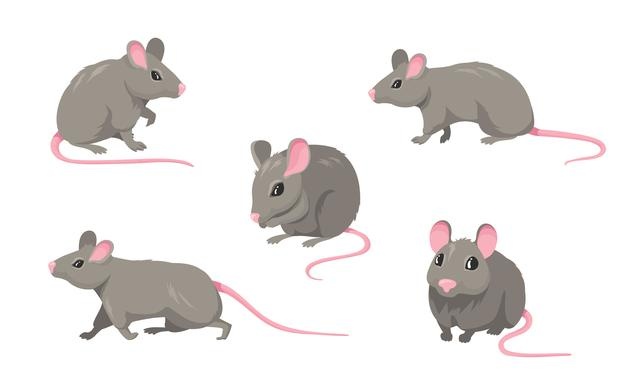
Rattlesnakes are very common and widespread animals, living right across the American continent from Canada to Argentina. They feed on a variety of prey, including mice, voles, rats, chipmunks and many other small animals.
PARAGRAPH 8

Rattlesnakes are very common and widespread animals, living right across the American continent from Canada to Argentina. They feed on a variety of prey, including mice, voles, rats, chipmunks and many other small animals.
IMPORTANT WORDS
Widespread: found or happening over a large area; affecting a large number of people, दूर-दूर तक फैला हुआ, व्याप्त; अनेक लोगों को प्रभावित करने वाला, व्यापक
IMPORTANT WORDS
Widespread: found or happening over a large area; affecting a large number of people, दूर-दूर तक फैला हुआ, व्याप्त; अनेक लोगों को प्रभावित करने वाला, व्यापक
EXPLANATION
Rattlesnake bahut aam aur duniya bhar mein faile hue jaanwar hai, jo Canada se Argentina tak America mahadveep mein rehte hai. Ve mice, voles, chipmunks aur kayi anya chote jaanwaro ka shikaar karte hai.
EXPLANATION
रैटलस्नेक बहुत आम और दुनिया भर में फैले हुए जानवर हैं, जो कनाडा से अर्जेंटीना तक अमेरिकी महाद्वीप में रहते हैं। वे चूहों, वॉल्स, चिपमंक्स और कई अन्य छोटे जानवरों का शिकार करते हैं।
PARAGRAPH 9
Rattlesnakes kill their prey with venom. Like all snakes, they swallow the unfortunate animals whole. Few snakes have to eat more than once a week and some, such as the larger pythons, can survive for a year or more without eating.
PARAGRAPH 9
Rattlesnakes kill their prey with venom. Like all snakes, they swallow the unfortunate animals whole. Few snakes have to eat more than once a week and some, such as the larger pythons, can survive for a year or more without eating.
IMPORTANT WORDS
Unfortunate: that you feel sorry about, अफ़सोसनाक, खेदजनक
IMPORTANT WORDS
Unfortunate: that you feel sorry about, अफ़सोसनाक, खेदजनक
EXPLANATION
Rattlesnake apne shikaar ko jeher (poison) se maarte hai. Sabhi saapo ki tarah, ve apne shikaar ko poora nigal (swallow) jaate hai. Kuch saapo ko week mein ek se zyada baar khana padta hai aur kuch, jaise ki bade pythons, bina khaye ek saal ya usse bhi zyada samay tak jeevit reh sakte hai.
EXPLANATION
रैटलस्नेक अपने शिकार को जहर से मारते हैं। सभी सांपों की तरह, वे अपने शिकार को पूरा निगल जाते हैं। कुछ सांपों को सप्ताह में एक से ज़्यादा बार खाना पड़ता है और कुछ, जैसे कि बड़े अजगर, बिना खाए एक वर्ष या उससे भी ज़्यादा समय तक जीवित रह सकते हैं।
PARAGRAPH 10

Mongooses like to hunt together, but they always keep a lookout for dangerous predators nearby. Poking their noses into holes, overturning rocks with their paws and scratching the ground with their sharp claws, banded mongooses are very amusing animals to watch. A common sight in many parts of Africa, they travel in groups of about twenty to forage for beetles, millipedes and other small creatures.
PARAGRAPH 10

Mongooses like to hunt together, but they always keep a lookout for dangerous predators nearby. Poking their noses into holes, overturning rocks with their paws and scratching the ground with their sharp claws, banded mongooses are very amusing animals to watch. A common sight in many parts of Africa, they travel in groups of about twenty to forage for beetles, millipedes and other small creatures.
IMPORTANT WORDS
Predators: an animal that kills and eats other animals, अन्य जीवों को मारने और खाने वाला जानवर; परजीवभक्षी, हिंसक पशु
Dangerous: likely to cause injury or damage, ख़तरनाक, भयंकर
Amusing: to make somebody laugh or smile; to seem funny to somebody, किसी को हँसाना; किसी बात का मज़ेदार लगना
Forage: (used about animals) to search for food, (पशुओं के लिए प्रयुक्त) चारा या भोजन खोजना
IMPORTANT WORDS
Predators: an animal that kills and eats other animals, अन्य जीवों को मारने और खाने वाला जानवर; परजीवभक्षी, हिंसक पशु
Dangerous: likely to cause injury or damage, ख़तरनाक, भयंकर
Amusing: to make somebody laugh or smile; to seem funny to somebody, किसी को हँसाना; किसी बात का मज़ेदार लगना
Forage: (used about animals) to search for food, (पशुओं के लिए प्रयुक्त) चारा या भोजन खोजना
EXPLANATION
Mongoose (naivle) ek sath shikaar karna pasand karte hai, lekin ve hamesha aas-paas ke khatarnaak shikariyon se bachkar rehte hai. Apni naak zameen mein khude hue holes mein daalna, apne panjo se chattano ko ulatna aur apne nukile panjo se zameen ko khodna, banded mongoose (naivle) dekhne mein bahut hi manoranjak (entertaining) jaanwar hote hai. Vah aam taur mein Africa ke kayi parts mein paye jaate hai, ve beetles, millipedes aur any chote jeevon ki talash mein lagbhag 20 ke groups mein yatra karte hai.
EXPLANATION
मंगूस (नेवले) एक साथ शिकार करना पसंद करते हैं, लेकिन वे हमेशा आस-पास के खतरनाक शिकारियों से बचकर रहते हैं। अपनी नाक ज़मीन में खुदे हुए छेदों में डालना, अपने पंजों से चट्टानों को उलटना और अपने नुकीले पंजों से जमीन को खोदना, बैंडेड मंगूस (नेवले) देखने में बहुत ही मनोरंजक जानवर होते हैं। वह आम तौर में अफ्रीका के कई हिस्सों में पाए जाते है, वे बीटल, मिलीपेड और अन्य छोटे जीवों की तलाश में लगभग बीस के समूह (ग्रुप) में यात्रा करते हैं।
PARAGRAPH 11
They like to hunt together, keeping in touch whenever they go out of sight behind rocks or bushes by twittering and calling. Always on the lookout for danger — hawks, eagles and large snakes — they warn one another with a special alarm call if they spot anything suspicious.
PARAGRAPH 11
They like to hunt together, keeping in touch whenever they go out of sight behind rocks or bushes by twittering and calling. Always on the lookout for danger — hawks, eagles and large snakes — they warn one another with a special alarm call if they spot anything suspicious.
IMPORTANT WORDS
Suspicious: feeling that somebody has done something wrong, dishonest or illegal, जिसे किसी बात के ग़लत, अनुचित या ग़ैर-क़ानूनी होने का अहसास हो, संदेही या संशयी, संदेहग्रस्त या संशयग्रस्त
IMPORTANT WORDS
Suspicious: feeling that somebody has done something wrong, dishonest or illegal, जिसे किसी बात के ग़लत, अनुचित या ग़ैर-क़ानूनी होने का अहसास हो, संदेही या संशयी, संदेहग्रस्त या संशयग्रस्त
EXPLANATION
Ve ek sath shikaar karna pasand karte hai, jab bhi koyi unme se ek chattano ya jhaadiyo ke peeche chup jaata hai ya dikhayi nahi deta hai, vah chu-chu ki aawaaz nikaal kar ek dusre ke saath sampark mein rehte hai. Hamesha khatre se surakshit rehte hue - hawks, eagles aur bade saap - agar ve kuch bhi suspicious (sandeh janak) pate hai toh ve ek doosre ko special alarm call ke saath chetavani dete hai.
EXPLANATION
वे एक साथ शिकार करना पसंद करते हैं, जब भी कोई उनमें से एक चट्टानों या झाड़ियों के पीछे छुप जाता है या दिखाई नहीं देता है, वह चूं-चूं की आवाज़ निकाल कर एक दुसरे के साथ संपर्क में रहते हैं। हमेशा खतरे से सुरक्षित रहते हुए - बाज, चील और बड़े साँप - अगर वे कुछ भी संदिग्ध (संदेह जनक) पाते हैं तो वे एक दूसरे को विशेष अलार्म कॉल के साथ चेतावनी देते हैं।
PARAGRAPH 12
Mongooses are famous for being able to kill snakes without getting hurt themselves. Their reactions are so fast that they can dodge each time the snake strikes. They continually make a nuisance of themselves until, after a while, when the snake gets tired, they quickly dive in for the kill.
PARAGRAPH 12
Mongooses are famous for being able to kill snakes without getting hurt themselves. Their reactions are so fast that they can dodge each time the snake strikes. They continually make a nuisance of themselves until, after a while, when the snake gets tired, they quickly dive in for the kill.
IMPORTANT WORDS
Reactions: the physical ability to act quickly when something happens, किसी घटना पर त्वरित प्रतिक्रिया का शारीरिक सामर्थ्य
Dodge: to move quickly in order to avoid somebody/something, किसी से बचने के लिए तेज़ी से निकल जाना, कतरा कर निकल जाना
IMPORTANT WORDS
Reactions: the physical ability to act quickly when something happens, किसी घटना पर त्वरित प्रतिक्रिया का शारीरिक सामर्थ्य
Dodge: to move quickly in order to avoid somebody/something, किसी से बचने के लिए तेज़ी से निकल जाना, कतरा कर निकल जाना
EXPLANATION
Mongoose (naivle) khud ko chot pahunchaye bina saapo (snakes) ko maarne ke liye prasidh hai. Unke reactions itne tez hote hai ki ve har baar saap ke har hamle se bach jaate hai. Ve lagataar use tab tak pareshan karte hai, jab tak ki saap thak na jaye aur phir ve jaldi se use jaan se maar dete hai.
EXPLANATION
मंगूस (नेवले) खुद को चोट पहुँचाए बिना सांपों को मारने में सक्षम होने के लिए प्रसिद्ध हैं। उनकी प्रतिक्रियाएँ इतनी तेज होती हैं कि वे हर बार साँप के हर हमले से बच जाते हैं। वे लगातार उसे तब तक परेशान करते हैं, जब तक कि साँप थक न जाए और फिर वे जल्दी से उसे जान से मार देते हैं।
PARAGRAPH 13
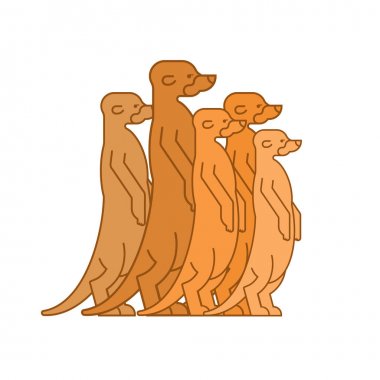
All the female mongooses have their kittens at about the same time. They are raised by the whole group in a den made inside an old termite mount or hollow log. When most of the adults are out looking for food, one or two males stay behind to stand guard until the others return for the night.
PARAGRAPH 13

All the female mongooses have their kittens at about the same time. They are raised by the whole group in a den made inside an old termite mount or hollow log. When most of the adults are out looking for food, one or two males stay behind to stand guard until the others return for the night.
IMPORTANT WORDS
Den: the place where certain wild animals live, for example lions, (शेर आदि की) माँद, गुफ़ा
IMPORTANT WORDS
Den: the place where certain wild animals live, for example lions, (शेर आदि की) माँद, गुफ़ा
EXPLANATION
Sabhi female mongoose (naivle) lagbhag ek hi samay par bache dete hai. Unhe poore group dwara ek purane termite mount ya khokhle (hollow) log ke andar banayi gayi gufa mein ek saath pala jata hai. Jab saare adults bhojan ki talash mein baahar jate hai, toh ek ya do males pehra dene ke liye vahi rehte hai jab tak ki baaki raat mein vapas nahi aa jate.
EXPLANATION
सभी मादा मंगूस (नेवले) लगभग एक ही समय पर बच्चे देते हैं। उन्हें पूरे समूह द्वारा एक पुराने दीमक माउंट या खोखले लॉग के अंदर बनाई गई गुफ़ा में एक साथ पाला जाता है। जब अधिकांश वयस्क भोजन की तलाश में बाहर जाते हैं, तो एक या दो नर पहरा देने के लिए वही रहते हैं जब तक कि बाकी रात में वापस नहीं आ जाते।
PARAGRAPH 14
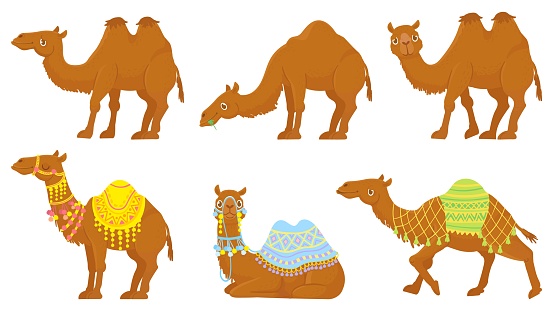
Another animal which lives in the desert is the camel. Camels were first domesticated by people many thousands of years ago. In the wild, camels usually live in small groups of up to thirty animals.
PARAGRAPH 14

Another animal which lives in the desert is the camel. Camels were first domesticated by people many thousands of years ago. In the wild, camels usually live in small groups of up to thirty animals.
IMPORTANT WORDS
Domesticated: to tame animals, घरेलू बनाना; पालतू बनाना
IMPORTANT WORDS
Domesticated: to tame animals, घरेलू बनाना; पालतू बनाना
EXPLANATION
Camels bhi deserts mein rehte hai. Camels ko hazaro saal pehle logo ne paaltu banaya tha. Jungle mein, camels aamtaur par 30 ke chote groups mein rehte hai.
EXPLANATION
ऊंट भी रेगिस्तान में रहते है। ऊंटों को हजारों साल पहले लोगों ने पालतू बनाया था। जंगल में, ऊंट आमतौर पर तीस के छोटे समूहों (ग्रुप्स) में रहते हैं।
PARAGRAPH 15
Camels have long, shaggy winter coats to keep warm and shorter, tidier coats in the summer to keep cool. A thirsty camel can drink as much as thirty gallons of water — that’s about five hundred full glasses — in just ten minutes. Normally, however, it gets all the moisture it needs from desert plants and can survive for up to ten months without drinking any water at all.
PARAGRAPH 15
Camels have long, shaggy winter coats to keep warm and shorter, tidier coats in the summer to keep cool. A thirsty camel can drink as much as thirty gallons of water — that’s about five hundred full glasses — in just ten minutes. Normally, however, it gets all the moisture it needs from desert plants and can survive for up to ten months without drinking any water at all.
IMPORTANT WORDS
Gallons: a measure of liquid; 4.5 litres (or 3.8 litres in an American gallon), द्रव की एक माप, गैलन; 4.5 लिटर (या अमेरिकी गैलन में 3.8 लिटर)
IMPORTANT WORDS
Gallons: a measure of liquid; 4.5 litres (or 3.8 litres in an American gallon), द्रव की एक माप, गैलन; 4.5 लिटर (या अमेरिकी गैलन में 3.8 लिटर)
EXPLANATION
Thand ke mausam mein unke baal lambe rakhe jate hai taki vah garam rahe aur garmiyon mein unhe chota chota kaat diya jata hai taki unka shareer thanda reh sake. Ek pyaasa camel sirf 10 minutes mein 30 gallon paani - yani lagbhag 500 glass paani pee sakta hai. Aam taur par, vah desert ke paudho se nami lete hai aur bina paani piye 10 months tak jeevit reh sakte hai.
EXPLANATION
ठण्ड के मौसम में उनके बाल लम्बे रखे जाते है ताकि वह गरम रहे और गर्मियों में उन्हें छोटा छोटा काट दिया जाता है ताकि उनका शरीर ठंडा रह सके। एक प्यासा ऊंट सिर्फ दस मिनट में तीस गैलन पानी - यानी लग भग पांच सौ गिलास पानी पी सकता है। आम तौर पर, वह रेगिस्तानी पौधों से नमी लेते है और बिना पानी पिए दस महीनों तक जीवित रह सकते हैं।
PARAGRAPH 16
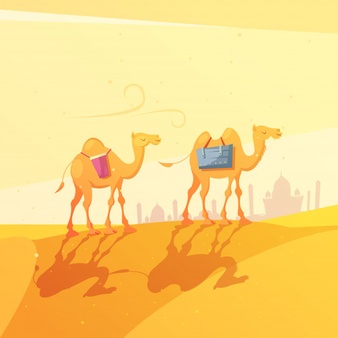
There are two different kinds of camels. One, known as the Dromedary, has only a single hump; the other is called a Bactrian camel and has two humps.
PARAGRAPH 16

There are two different kinds of camels. One, known as the Dromedary, has only a single hump; the other is called a Bactrian camel and has two humps.
IMPORTANT WORDS
Hump: a large round lump, for example on the back of an animal who lives in the desert (camel), (ऊँट आदि का) कूबड़
IMPORTANT WORDS
Hump: a large round lump, for example on the back of an animal who lives in the desert (camel), (ऊँट आदि का) कूबड़
EXPLANATION
Camels do alag-alag prakaar ke hote hai. Ek, jise Dromedary ke naam se jana jata hai, unke paas keval ek hi hump hota hai; doosre ko Bactrian camel bulaya jata hai aur inke do humps hote hai.
EXPLANATION
ऊंट दो अलग-अलग प्रकार के होते हैं। एक, जिसे ड्रोमेडरी के नाम से जाना जाता है, उनके पास केवल एक ही कूबड़ (हंप) होता है; दूसरे को बैक्ट्रियन ऊंट बुलाया जाता है और इनके दो कूबड़ (हंप) होते हैं।
PARAGRAPH 17
The humps help the animal to survive in the desert, by acting as storage containers. But they don’t store water — as many people wrongly believe — they are full of fat. This fat nourishes the camels when food is scarce.
PARAGRAPH 17
The humps help the animal to survive in the desert, by acting as storage containers. But they don't store water — as many people wrongly believe — they are full of fat. This fat nourishes the camels when food is scarce.
IMPORTANT WORDS
Storage: the keeping of things until they are needed; the place where they are kept, (आवश्यकता होने तक) वस्तुओं को संचित किए रखने की क्रिया, संग्रहण; संग्रहण-स्थल, गोदाम, भंडार
Containers: a box, bottle, packet, etc. in which something is kept, डिब्बा, बोतल, पैकेट आदि जिसमें कुछ रखा जाता है; पात्र
Nourishes: to give somebody/something the right kind of food so that he/she/it can grow and be healthy, (किसी को) पोषक भोजन देकर पुष्ट और स्वस्थ बनाना
Scarce: not existing in large quantities; hard to find, विरल (अधिक मात्रा में उपलब्ध नहीं); दुर्लभ
IMPORTANT WORDS
Storage: the keeping of things until they are needed; the place where they are kept, (आवश्यकता होने तक) वस्तुओं को संचित किए रखने की क्रिया, संग्रहण; संग्रहण-स्थल, गोदाम, भंडार
Containers: a box, bottle, packet, etc. in which something is kept, डिब्बा, बोतल, पैकेट आदि जिसमें कुछ रखा जाता है; पात्र
Nourishes: to give somebody/something the right kind of food so that he/she/it can grow and be healthy, (किसी को) पोषक भोजन देकर पुष्ट और स्वस्थ बनाना
Scarce: not existing in large quantities; hard to find, विरल (अधिक मात्रा में उपलब्ध नहीं); दुर्लभ
EXPLANATION
Hump storage containers ke roop mein kaam karke jaanwar ko desert mein jeevit rehne mein madad karte hai. Lekin ve paani jama nahi karte - jaisa ki bahut se log maante hai - ve charbi (fat) se bhare hote hai. Bhojan ki kami hone par yah charbi (fat) camels ka poshan karti hai.
EXPLANATION
कूबड़ स्टोरेज कंटेनरों के रूप में कार्य करके जानवर को रेगिस्तान में जीवित रहने में मदद करते हैं। लेकिन वे पानी जमा नहीं करते - जैसा कि बहुत से लोग मानते हैं - वे चरबी से भरे होते हैं। भोजन की कमी होने पर यह चरबी ऊंटों का पोषण करती है।
PARAGRAPH 18
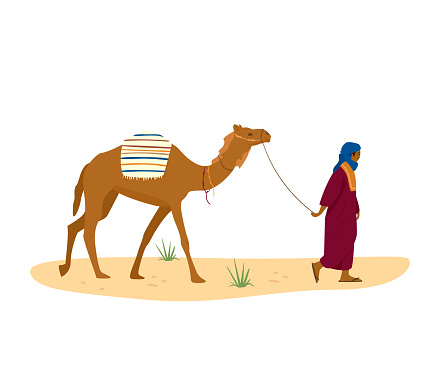
If they have nothing to eat for several days, their humps shrink as the fat is used up. There are many other ways in which camels are adapted to desert life. Their mouths are so tough that even the sharp thorn cannot pierce through.
PARAGRAPH 18

If they have nothing to eat for several days, their humps shrink as the fat is used up. There are many other ways in which camels are adapted to desert life. Their mouths are so tough that even the sharp thorn cannot pierce through.
IMPORTANT WORDS
Shrink: to become smaller or make something smaller, (किसी वस्तु का) सिकुड़ जाना या किसी वस्तु को सिकोड़ देना (आकार में छोटा हो जाना या कर देना)
Pierce: to manage to go through or into something, किसी वस्तु में से गुज़र जाना या उसके अंदर घुस जाना
IMPORTANT WORDS
Shrink: to become smaller or make something smaller, (किसी वस्तु का) सिकुड़ जाना या किसी वस्तु को सिकोड़ देना (आकार में छोटा हो जाना या कर देना)
Pierce: to manage to go through or into something, किसी वस्तु में से गुज़र जाना या उसके अंदर घुस जाना
EXPLANATION
Yadi unke paas kayi dino tak khaane ke liye kuch na ho, toh charbi khatam hone ke saath saath unke humps bhi shrink ho jaate hai. Aise kayi anya tareeke hai jinse camels desert mein apna guzara kar pate hai. Inka muh itna sakht (tough) hota hai ki nukila (sharp) kaanta bhi usme ched nahi kar paata hai.
EXPLANATION
यदि उनके पास कई दिनों तक खाने के लिए कुछ ना हो, तो चर्बी खत्म होने के साथ साथ उनके कूबड़ भी सिकुड़ जाते हैं। ऐसे कई अन्य तरीके हैं जिनसे ऊंट रेगिस्तान में अपना गुज़ारा कर पाते है। इनका मुंह इतना सख्त होता है कि नुकीला कांटा भी उसमें छेद नहीं कर पाता है।
SUMMARY
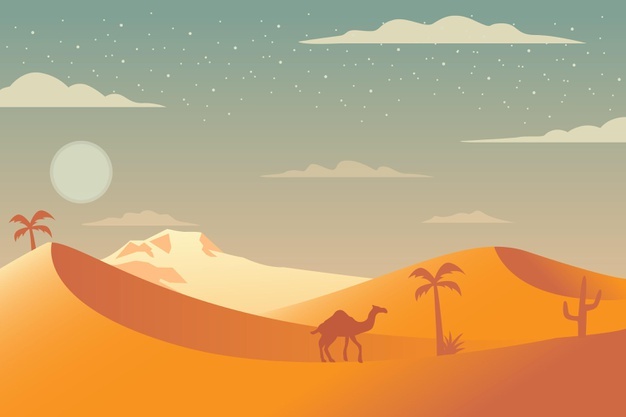
SUMMARY

EXPLANATION
EXPLANATION
QUESTION ANSWERS
A.1. Talk to your partner and say whether the following statements are true or false.
(i) No animal can survive without water.
Answer: True
(ii)Deserts are endless sand dunes.
Answer: False
(iii)Most snakes are harmless.
Answer: True
(iv)Snakes cannot hear, but they can feel vibrations through the ground.
Answer: True
(v) Camels store water in their humps.
Answer: False
2. Answer the following questions.
(i) How do desert animals survive without water? (1)
Answer: The desert animals find ways to survive for several days without any water. Gerbils keep themselves cool in underground holes. The beetles catch drops of moisture on their legs. The camels get moisture from desert plants and the fat stored in their humps help them survive.
(ii)How do mongooses kill snakes? (6)
Answer: Mongooses have very swift reactions. They dodge when the snake tries to strike. They trouble the snake until it is tired and then they attack and kill the snake. They themselves don’t get any injuries.
(iii)How does the hump of the camels help them to survive when there is no water? (9)
Answer: The hump of the camel is meant for storing fat and not water. That fat meets the camel’s need for water and nourishment and helps the camel to survive for long.
B. Fill in the blanks in the following passage with the above words/phrases.
All animals in forests and deserts struggle to________________________________ in______ . Though most of the animals are _______________________ , some are dangerous when ________________ . If an___________________ is noticed, they attack or bite to save themselves. They struggle _____________________ for food and water. Some animals are called___________________ because they_____________________ on other animals.
Answer: All animals in forests and deserts struggle to survive in harsh conditions. Though most of the animals are harmless; some are dangerous when threatened. If an intruder is noticed, they attack or bite to save themselves. They struggle continually for food and water. Some animals are called predators because they prey on other animals.
QUESTION ANSWERS
A.1. Talk to your partner and say whether the following statements are true or false.
(i) No animal can survive without water.
Answer: True
(ii)Deserts are endless sand dunes.
Answer: False
(iii)Most snakes are harmless.
Answer: True
(iv)Snakes cannot hear, but they can feel vibrations through the ground.
Answer: True
(v) Camels store water in their humps.
Answer: False
2. Answer the following questions.
(i) How do desert animals survive without water? (1)
Answer: The desert animals find ways to survive for several days without any water. Gerbils keep themselves cool in underground holes. The beetles catch drops of moisture on their legs. The camels get moisture from desert plants and the fat stored in their humps help them survive.
(ii)How do mongooses kill snakes? (6)
Answer: Mongooses have very swift reactions. They dodge when the snake tries to strike. They trouble the snake until it is tired and then they attack and kill the snake. They themselves don’t get any injuries.
(iii)How does the hump of the camels help them to survive when there is no water? (9)
Answer: The hump of the camel is meant for storing fat and not water. That fat meets the camel’s need for water and nourishment and helps the camel to survive for long.
B. Fill in the blanks in the following passage with the above words/phrases.
All animals in forests and deserts struggle to________________________________ in______ . Though most of the animals are _______________________ , some are dangerous when ________________ . If an___________________ is noticed, they attack or bite to save themselves. They struggle _____________________ for food and water. Some animals are called___________________ because they_____________________ on other animals.
Answer: All animals in forests and deserts struggle to survive in harsh conditions. Though most of the animals are harmless; some are dangerous when threatened. If an intruder is noticed, they attack or bite to save themselves. They struggle continually for food and water. Some animals are called predators because they prey on other animals.
GLOSSARY
Driest: having little or no rain, वर्षान्यून या वर्षाहीन (मौसम), कम वर्षा वाला या वर्षारहित (मौसम), सूखा
Survive: to continue to live or exist in or after a difficult or dangerous situation, कठिन या संकटपूर्ण स्थिति में या उसके बाद जीवित या अस्तित्व में बने रहना
Scorching: very hot, बहुत गरम; झुलसाने वाला
Coping: to deal successfully with a difficult matter or situation, कठिन स्थिति से सफलतापूर्वक निपटना
Harsh: unpleasant and difficult to live in, जहाँ रहना अप्रिय और कठिन हो
Burrows: a hole in the ground made by certain animals, बिल
Beetles: an insect, often large, shiny and black, with a hard case on its back covering its wings. There are many different types of beetles, एक प्रकार का बड़ा काला व चमकीला कीट जिसके पीठ पर कड़ा आवरण होता है जो इसके पंखों को ढकता है; एक प्रकार का भौंरा, भृंग। यह कीट अनेक प्रकार का होता है
Moisture: water in small drops on a surface, नमी, आर्द्रता
Trickle: (used about a liquid) to flow in a thin line, (द्रव का) बूँद-बूँद टपकना
Strange: unusual or unexpected, असामान्य या अप्रत्याशित; विचित्र; अजीब
Endless: lasting long and seeming to have no end, बहुत लंबा, अंतहीन-सा, मानो अंतहीन
Dunes: a low hill of sand by the sea or in the desert, बालू का टीला (समुद्र के पास या रेगिस्तान में बना), बालूटिब्बा
Rocky: covered with or made of rocks, चट्टानों से भरा या बना हुआ; चट्टानी
Harmless: not able or not likely to cause damage or injury; safe, अहानिकर; सुरक्षित
Poisonous: (used about animals, etc.) producing and using poison to attack its enemies, (पशु आदि) विषैला, ज़हरीला
Reputation: the opinion that people in general have about what somebody/something is like, व्यकि्त या वस्तु के विषय में लोगों की आम धारणा
Frightening: making you feel afraid or shocked, डराने या सदमा पहुँचाने वाला
Upright: in or into a vertical position, खड़ी स्थिति में, खड़ा, सीधा
Disturbed: annoy or bother someone, किसी को परेशान या तंग करना
Intruder: a person who enters a place without permission and often secretly, बिना अनुमति और प्रायः गुप्त रीति से किसी स्थान में प्रवेश करने वाला व्यक्ति; घुसपैठिया, अनधिकार प्रवेश करने वाला व्यक्ति
Warnings: something that tells you to be careful or tells you about something, usually something bad, before it happens, (प्रायः अशुभ स्थिति से) सतर्क करने वाली बात; पूर्वसूचना, चेतावनी
Threatened: to warn that you may hurt, kill or punish somebody if he/she does not do what you want, (इच्छित काम न करने पर) (चोट, क्षति पहुँचाने की) धमकी देना
Vibrations: an instance of vibrating, दोलन, प्रदोलन, कंपन
Widespread: found or happening over a large area; affecting a large number of people, दूर-दूर तक फैला हुआ, व्याप्त; अनेक लोगों को प्रभावित करने वाला, व्यापक
Unfortunate: that you feel sorry about, अफ़सोसनाक, खेदजनक
Predators: an animal that kills and eats other animals, अन्य जीवों को मारने और खाने वाला जानवर; परजीवभक्षी, हिंसक पशु
Dangerous: likely to cause injury or damage, ख़तरनाक, भयंकर
Amusing: to make somebody laugh or smile; to seem funny to somebody, किसी को हँसाना; किसी बात का मज़ेदार लगना
Forage: (used about animals) to search for food, (पशुओं के लिए प्रयुक्त) चारा या भोजन खोजना
Suspicious: feeling that somebody has done something wrong, dishonest or illegal, जिसे किसी बात के ग़लत, अनुचित या ग़ैर-क़ानूनी होने का अहसास हो, संदेही या संशयी, संदेहग्रस्त या संशयग्रस्त
Reactions: the physical ability to act quickly when something happens, किसी घटना पर त्वरित प्रतिक्रिया का शारीरिक सामर्थ्य
Dodge: to move quickly in order to avoid somebody/something, किसी से बचने के लिए तेज़ी से निकल जाना, कतरा कर निकल जाना
Den: the place where certain wild animals live, for example lions, (शेर आदि की) माँद, गुफ़ा
Domesticated: to tame animals, घरेलू बनाना; पालतू बनाना
Gallons: a measure of liquid; 4.5 litres (or 3.8 litres in an American gallon), द्रव की एक माप, गैलन; 4.5 लिटर (या अमेरिकी गैलन में 3.8 लिटर)
Hump: a large round lump, for example on the back of an animal who lives in the desert (camel), (ऊँट आदि का) कूबड़
Storage: the keeping of things until they are needed; the place where they are kept, (आवश्यकता होने तक) वस्तुओं को संचित किए रखने की क्रिया, संग्रहण; संग्रहण-स्थल, गोदाम, भंडार
Containers: a box, bottle, packet, etc. in which something is kept, डिब्बा, बोतल, पैकेट आदि जिसमें कुछ रखा जाता है; पात्र
Nourishes: to give somebody/something the right kind of food so that he/she/it can grow and be healthy, (किसी को) पोषक भोजन देकर पुष्ट और स्वस्थ बनाना
Scarce: not existing in large quantities; hard to find, विरल (अधिक मात्रा में उपलब्ध नहीं); दुर्लभ
Shrink: to become smaller or make something smaller, (किसी वस्तु का) सिकुड़ जाना या किसी वस्तु को सिकोड़ देना (आकार में छोटा हो जाना या कर देना)
Pierce: to manage to go through or into something, किसी वस्तु में से गुज़र जाना या उसके अंदर घुस जाना
GLOSSARY
Driest: having little or no rain, वर्षान्यून या वर्षाहीन (मौसम), कम वर्षा वाला या वर्षारहित (मौसम), सूखा
Survive: to continue to live or exist in or after a difficult or dangerous situation, कठिन या संकटपूर्ण स्थिति में या उसके बाद जीवित या अस्तित्व में बने रहना
Scorching: very hot, बहुत गरम; झुलसाने वाला
Coping: to deal successfully with a difficult matter or situation, कठिन स्थिति से सफलतापूर्वक निपटना
Harsh: unpleasant and difficult to live in, जहाँ रहना अप्रिय और कठिन हो
Burrows: a hole in the ground made by certain animals, बिल
Beetles: an insect, often large, shiny and black, with a hard case on its back covering its wings. There are many different types of beetles, एक प्रकार का बड़ा काला व चमकीला कीट जिसके पीठ पर कड़ा आवरण होता है जो इसके पंखों को ढकता है; एक प्रकार का भौंरा, भृंग। यह कीट अनेक प्रकार का होता है
Moisture: water in small drops on a surface, नमी, आर्द्रता
Trickle: (used about a liquid) to flow in a thin line, (द्रव का) बूँद-बूँद टपकना
Strange: unusual or unexpected, असामान्य या अप्रत्याशित; विचित्र; अजीब
Endless: lasting long and seeming to have no end, बहुत लंबा, अंतहीन-सा, मानो अंतहीन
Dunes: a low hill of sand by the sea or in the desert, बालू का टीला (समुद्र के पास या रेगिस्तान में बना), बालूटिब्बा
Rocky: covered with or made of rocks, चट्टानों से भरा या बना हुआ; चट्टानी
Harmless: not able or not likely to cause damage or injury; safe, अहानिकर; सुरक्षित
Poisonous: (used about animals, etc.) producing and using poison to attack its enemies, (पशु आदि) विषैला, ज़हरीला
Reputation: the opinion that people in general have about what somebody/something is like, व्यकि्त या वस्तु के विषय में लोगों की आम धारणा
Frightening: making you feel afraid or shocked, डराने या सदमा पहुँचाने वाला
Upright: in or into a vertical position, खड़ी स्थिति में, खड़ा, सीधा
Disturbed: annoy or bother someone, किसी को परेशान या तंग करना
Intruder: a person who enters a place without permission and often secretly, बिना अनुमति और प्रायः गुप्त रीति से किसी स्थान में प्रवेश करने वाला व्यक्ति; घुसपैठिया, अनधिकार प्रवेश करने वाला व्यक्ति
Warnings: something that tells you to be careful or tells you about something, usually something bad, before it happens, (प्रायः अशुभ स्थिति से) सतर्क करने वाली बात; पूर्वसूचना, चेतावनी
Threatened: to warn that you may hurt, kill or punish somebody if he/she does not do what you want, (इच्छित काम न करने पर) (चोट, क्षति पहुँचाने की) धमकी देना
Vibrations: an instance of vibrating, दोलन, प्रदोलन, कंपन
Widespread: found or happening over a large area; affecting a large number of people, दूर-दूर तक फैला हुआ, व्याप्त; अनेक लोगों को प्रभावित करने वाला, व्यापक
Unfortunate: that you feel sorry about, अफ़सोसनाक, खेदजनक
Predators: an animal that kills and eats other animals, अन्य जीवों को मारने और खाने वाला जानवर; परजीवभक्षी, हिंसक पशु
Dangerous: likely to cause injury or damage, ख़तरनाक, भयंकर
Amusing: to make somebody laugh or smile; to seem funny to somebody, किसी को हँसाना; किसी बात का मज़ेदार लगना
Forage: (used about animals) to search for food, (पशुओं के लिए प्रयुक्त) चारा या भोजन खोजना
Suspicious: feeling that somebody has done something wrong, dishonest or illegal, जिसे किसी बात के ग़लत, अनुचित या ग़ैर-क़ानूनी होने का अहसास हो, संदेही या संशयी, संदेहग्रस्त या संशयग्रस्त
Reactions: the physical ability to act quickly when something happens, किसी घटना पर त्वरित प्रतिक्रिया का शारीरिक सामर्थ्य
Dodge: to move quickly in order to avoid somebody/something, किसी से बचने के लिए तेज़ी से निकल जाना, कतरा कर निकल जाना
Den: the place where certain wild animals live, for example lions, (शेर आदि की) माँद, गुफ़ा
Domesticated: to tame animals, घरेलू बनाना; पालतू बनाना
Gallons: a measure of liquid; 4.5 litres (or 3.8 litres in an American gallon), द्रव की एक माप, गैलन; 4.5 लिटर (या अमेरिकी गैलन में 3.8 लिटर)
Hump: a large round lump, for example on the back of an animal who lives in the desert (camel), (ऊँट आदि का) कूबड़
Storage: the keeping of things until they are needed; the place where they are kept, (आवश्यकता होने तक) वस्तुओं को संचित किए रखने की क्रिया, संग्रहण; संग्रहण-स्थल, गोदाम, भंडार
Containers: a box, bottle, packet, etc. in which something is kept, डिब्बा, बोतल, पैकेट आदि जिसमें कुछ रखा जाता है; पात्र
Nourishes: to give somebody/something the right kind of food so that he/she/it can grow and be healthy, (किसी को) पोषक भोजन देकर पुष्ट और स्वस्थ बनाना
Scarce: not existing in large quantities; hard to find, विरल (अधिक मात्रा में उपलब्ध नहीं); दुर्लभ
Shrink: to become smaller or make something smaller, (किसी वस्तु का) सिकुड़ जाना या किसी वस्तु को सिकोड़ देना (आकार में छोटा हो जाना या कर देना)
Pierce: to manage to go through or into something, किसी वस्तु में से गुज़र जाना या उसके अंदर घुस जाना